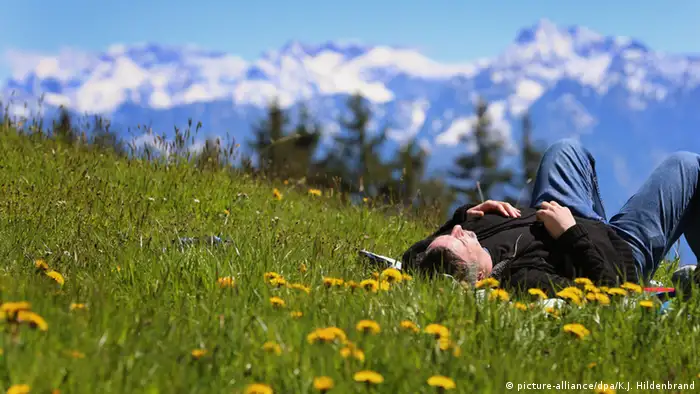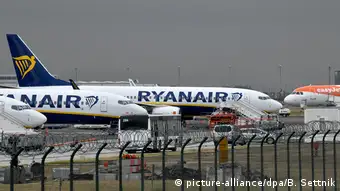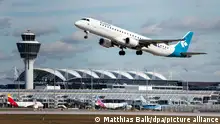Travel
Paying for climate protection: How CO2 offsetting for flights works
Traveling by plane is particularly damaging to the climate. If you want to clear your conscience, you can donate to projects that offset CO2 emissions. But where does that money actually go?

Like carbon dioxide, the cirrus contrails caused by aircraft are climate killers too, according to scientists
A flight from Munich to Mallorca, a favorite destination of Germans, takes two hours and fifteen minutes. Although its only a short distance, it's catastrophe for the climate, since a return flight emits an average of nearly 500 kilograms of carbon dioxide (CO2) per passenger. When it comes to the climate footprint of an individual, the average per capita output in Germany is around 11 tons per year. This is way above the two ton average required to keep global warming below two degrees Celsius (3.6 degrees Fahrenheit above pre-industrial levels) by the end of the century, as agreed in the Paris Climate Protection Agreement.
In recent years, the number of people flying has continued to rise, placing an increasingly larger burden on the environment. According to the UN aviation organization ICAO, in 2018, there were about 4.5 billion people worldwide were taking flights.
Comparison of carbon dioxide emissions
Trees can help save the climate
One way to compensate for the damage is through carbon offsetting. Travelers can use online calculators to enter their flight route, aircraft type and seat class to find out how much CO2 their trip has caused. They can then donate a certain sum of money to save emissions elsewhere, mostly to projects in developing countries. Examples of projects include the construction of bio-gas plants in Nepal or Kenya, energy-efficient cooking stoves in Tanzania, or drinking water filters in Egypt.
Reforestation, the supposed climate protection standard, is only offered by few providers, such as Primaklima in Germany. Planting trees is controversial. When they grow, they store CO2; but when they rot, or when the wood burns, carbon dioxide is released into the atmosphere again. Primaklima claims, however, that forests are multi-talented: they store and filter water, protect the soil from erosion and provide a habitat for animals and plants.
Criticism also comes from the Pope
The German government is currently paying off all "CO2 debts" that have arisen from business trips by government officials. Aside from that, carbon offsetting payments are not particularly common in Germany.
"From the latest environmental awareness study, we know that only about nine percent of German air travelers offset," Corinna Gather from the Federal Environment Agency told DW. Some studies suggested even lower figures. The situation is similar in other countries.
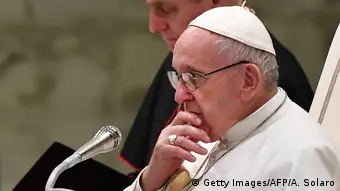
To plant trees with a fraction of the sum of the airfare in order to compensate for the caused damage is hypocrisy for Pope Francis
According to Gather, this is mainly due to the fact that many people are not properly informed and feel there is a lack of transparency. Offset payments also have an image problem. Pope Francis, for example, called them hypocritical. If this logic were taken to extremes, he said, one day arms companies would have to set up hospitals for children who fell victim to their bombs. Others, such as the economist Nico Paech, refer to the sale of indulgences, to "greenwashing".
Not flying is better than compensating
Even supporters do not see CO2 offsetting as a cure-all. "It is always only the third-best option after avoidance and reduction," Dietrich Brockhagen, Managing Director of the German carbon offset provider Atmosfair, told DW.
Gather has similar views and feels it is more important not to fly in the first place. She and her colleagues at the Federal Environment Agency, for example, increasingly hold video conferences or take the train. "Especially for short distances within Germany, for example, this makes perfect sense."
For German travel enthusiasts, this would mean heading to the Bavarian Alps instead of Mallorca, or to the North Sea instead of New York. But even if awareness of the climate-damaging nature of one's own desire to see the world is growing, the desire to travel is increasing globally.
In 2018, researchers at the University of Sydney reported in the magazine "Nature Climate Change" that the global carbon dioxide footprint caused by tourism had increased from 3.9 gigatons of CO2 per year in 2009 to 4.5 gigatons in 2013. This means tourism accounted for 8% of global greenhouse gas emissions.
Finding the best service provider
Offsetting is theoretically quite simple and only takes a few clicks. The most complicated part is finding the right provider, since there are hundreds worldwide. In the English-speaking world, for example, Green-e offers a list of 11 top-rated providers.
In Germany, the Federal Environment Agency has compiled a list of 27 service providers, including the winners of the German consumer watchdog foundation Stiftung Warentest: Atmosfair, Klima-Kollekte and Primaklima.
A lack of transparency when buying tickets
Some airlines, such as Lufthansa, Delta, Qantas or low-cost carrier Ryanair allow you to offset your emissions directly on their websites.
However, the process is not always transparent. Ryanair does not explicitly show how the amount is calculated or where it ends up. Lufthansa works with Swiss provider Myclimate, but the CO2 emissions calculated for a flight on the Lufthansa website are lower than those on the Myclimate page. "All airlines only take pure kerosene combustion into account," explains Stefan Baumeister, Managing Director of Myclimate Germany. Additional pollutants and climate-impacting effects are not taken into consideration.
The figures for CO2 emissions vary
This also explains why the same flight is considered to be harmful to different degrees by different carriers. For example, the flight from Munich to Mallorca with a passenger in economy class has a carbon footprint of between 309 and 592 kilograms, and offsetting costs range from four to 14 euros.
The Intergovernmental Panel on Climate Change (IPCC) recommends that at least 2.7 metric tons of "warming effect" should be included for each ton of CO2 emissions.
Gold Standard as a quality guarantee for climate protection projects

Dietrich Brockhagen, managing director of the german market leader for carbon dioxide compensation "Atmosfair"
The fact that the costs for offsetting also vary relates to which projects are being supported and the extent to which the providers are involved. "We do the projects ourselves on site and invest directly in the kilns or plants, for example, while others only buy the finished certificates and thus have no influence on the project," says Dietrich Brockhagen from Atmosfair.
Quality standards can be a way that those willing to offset can learn more about the projects they are donating to. The Gold Standard, for example, ensures that the projects not only help the climate but also help people or contribute to biodiversity.
Offsetting has its limits
After last year's hot summer, many suppliers of carbon offset in Germany noticed an increased demand — especially when it comes to private individuals who are concerned about their carbon footprint.
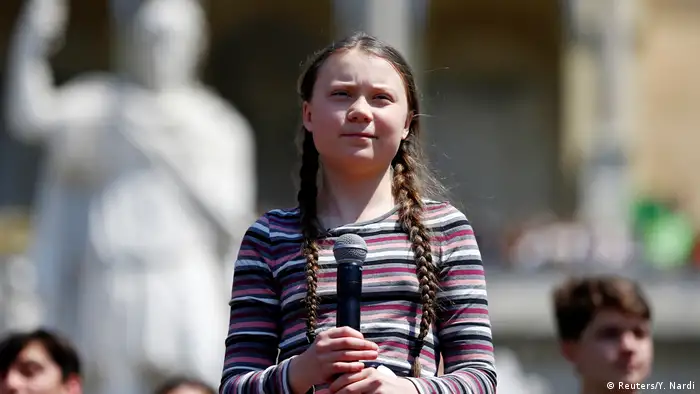
For the sake of the environment, do not fly: Greta Thunberg and the Swedish "Flygskam" ("flying shame")
Although this should be a reason to celebrate, Brockhagen warns against an offset free-for-all. "If there are better options, such as the use of green electricity for power consumption, then offsetting is a step backwards."
4 tips for making flying more sustainable
1. Ask yourself if the flight is really necessary. Are there more climate-friendly alternatives?
2. Check airlines for their CO2 emissions (e.g. with the Airline Index of Atmosfair)
3. Choose a direct flight, since most emissions are generated during take-off and landing
4. Offset with a provider whose projects are Gold Standard certified or the equivalent
DW recommends
WWW links
- Date 26.04.2019
- Author Monika Griebeler
- Related Subjects Cruise holidays, The Romantic Road, Sightseeing, CO2 reduction
- Keywords travel, carbon emissions, climate, aircraft, flying shame, CO2
- Feedback: Send us your feedback.
- Print Print this page
- Permalink https://p.dw.com/p/3HOoS
- Date 26.04.2019
- Author Monika Griebeler
- Related Subjects Cruise holidays, The Romantic Road, Sightseeing, CO2 reduction
- Keywords travel, carbon emissions, climate, aircraft, flying shame, CO2
- Send us your feedback.
- Print Print this page
- Permalink https://p.dw.com/p/3HOoS

